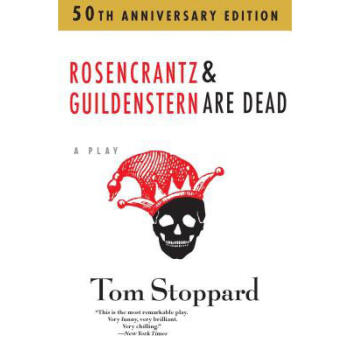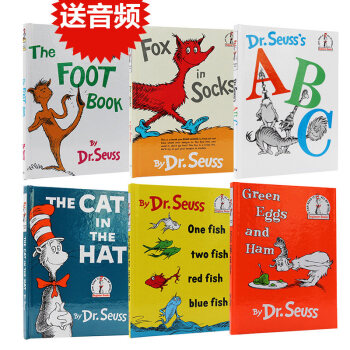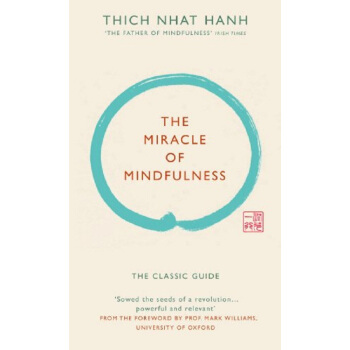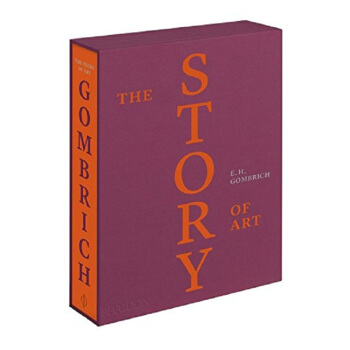

具体描述
The Story of Art
艺术的故事(豪华版)
再版16次
被译成40种文字,卖出超过500万本
被誉为“西方艺术史的圣经”
如果您是一位艺术爱好者,
贡布里希送您一把打开艺术大门的钥匙,带您寻求“美”的真谛,为您讲述史前壁画到现当代艺术的发展历程;
如果您是一位艺术创作者,
贡布里希为您构建“问题情境”,带您揭秘往昔的艺术家如何应对他们曾经面临的创作难题;
如果您是一位艺术史研究的初学者,
贡布里希用一百余页注释为您解析各类专业术语、补充详尽的史料与论点……
本书作者E.H.贡布里希是当代西方艺术学领域的泰斗和zui负盛誉的艺术史学家。本书自1950年问世以来被译成几十种文字多次再版,被誉为“一个世纪以来改变人们思维和生活方式的105部著作之一”。卢浮宫博物馆前任馆长罗森伯格把此书誉为“像《蒙娜丽莎》一样,饮誉世界”。
这本书的面世经历,与贡布里希di一本书一样偶然和离奇。
《艺术的故事》的内页
他能够完成此书,在很大程度上要归功于一个英国出版社老板。这个人名叫贝拉-霍洛维兹,是费顿出版社的创始人。这位出版社老板把贡布里希写好的两章书稿拿回给自己女儿看,他16岁的女儿看完后说:“老爸,你一定要出这本书!”霍洛维茨给了贡布里希50英镑预付款,让他一定写完这本书。
然而,二战开始了。
犹太家族出身的贡布里希疲于奔命,他对霍洛维茨说,我不写了,钱退给你,霍洛维茨却不肯拿回那50英镑,“我不要钱,只要书”。
贡布里希,出身犹太家族的他,在二战中为英国BBC担任,纳粹广播,“希特勒死了”的消息由他di一个发出。二战期间的经历,使他的一生都具有悲悯情怀。
1950年,《艺术的故事》出版。精明的书商老板,用50块买走了版权,他在这本书上赚的比贡布里希要多得多。
当然,贡布里希的熠熠才华也得以为世人所见,他很快成为世界上zui艺术院校包括牛津、剑桥、哈佛、伦敦皇家艺术学院、伦敦大学争相力邀的客座教授。
贡布里希享有美术界zui高荣誉
65年来,这本书被译成40种文字,卖出超过500万,被誉为“西方艺术史的圣经”。如何说这本书完胜其他专业书籍、成为艺术史学的“圣经”呢?也许就在于将“很难懂”的东西用大家都“看得懂”的话写出来。
在那项帮助人们熟悉艺术的伟大事业中,《艺术的故事》是一部之作。我无法表达自己对于这一新版本的赞美之情。设计优雅,图文辉映,插图悦目赏心,文字清晰闪光;所有这一切,使新版熠熠生辉。此书值得一读再读,就像美酒佳酿那样,愈加品赏,愈觉其味隽永。——美国国立艺术馆馆长卡特布朗
我们这一代的每一位艺术史家,其思考绘画的方式都几乎是由贡布里希塑造成形的。我在15岁时阅读了《艺术的故事》,从此以后就像干百万人一样,仿佛被授予了一幅伟大国度的地图,凭此可以信心百倍地深入探索,无须担心走入歧途。——英国国立美术馆馆长尼格格雷戈
贡布里希爵士的《艺术的故事》就像《蒙娜丽莎》一样,饮誉世界,把知识和享受传给人们。——法国卢佛宫馆长皮埃尔罗森伯格贡布里希的《艺术的故事》是一本生动活泼的艺术史教科书,帮助艺术初学者梳理艺术史脉络,将误区离析,重构艺术素养。套用法国卢浮宫馆长皮埃尔?罗森博格的评价,《艺术的故事》以阐明艺术史是“各种传统不断迂回、不断改变的历史,每一件作品在这历史中都能既回顾过去又导向未来”。——慢书房
"Like every art historian of my generation, my way of thinking about pictures has been in large measure shaped by Ernst Gombrich. I was 15 when I read The Story of Art and like millions since, I felt I had been given a map of a great country, and with it the confidence to explore further without fear of being overwhelmed."
―Neil MacGregor, former Director of the National Gallery, London, 1995
"Almost as well known as the Mona Lisa, Sir Ernst Gombrich's The Story of Art unites learning and pleasure."
―Pierre Rosenberg, Président-Directeur, Musée du Louvre, Paris
"More people... have been introduced to the world of fine art, in the last 45 years, though Ernst Gombrich's The Story of Art than through any other single book."
―Christopher Frayling, Professor of Cultural History, Royal College of Art, London
"The country's bestselling book on art, never out of print, still in demand (and not just by students) and one of the few 'gift books' that actually gets read. The work is not so simplistic as the title implies, but it is this very title that rendered the book enormously attractive in 1950 to a new sort of book buyer: the self-educator. This field was set to grow, publishers eagerly wooing punters into buying the one big book on every impossibly massive but key subject. But with Gombrich, art was all sewn up."
―The Times
"The Story of Art has just about everything you need to follow the course of art from cave painting to David Hockney. I am surprised it's not yet been placed in hotels on the bedside table along with Gideon's Bible since Gombrich is as authoritative as the voice of God. The book has always been a pleasure to read and handle, the colour plates, now with many new additions, are excellent and the text is clear and straightforward, devoid of both pedantry and academic tedium."
―The Birmingham Post
"As a humane, uncomplicated but unpatronising account of art from prehistoric cave daubs to twentieth-century splurges, Gombrich's Story of Art is just what its title promises: more of a story than a work of reference, yet that as well."
―Business Weekly
"A wise and wide-ranging introduction to art history that will last and last."
―The List
"Lucid and endlessly informative."
―The Good Book Guide
"His populist approach comes from his childhood in Vienna, where art was for everyone, not just for stuffed shirts."
―The Mail on Sunday
"Gombrich has done more than any other human being to draw people towards an enlightened understanding of art. Wearing his immense learning lightly, tackling abstract ideas without losing his readers in jargon, he has attracted a devoted following."
―The Sunday Times
"The gift he gave us was to make the living process of art understandable to us all. Rather than a dry cultural history, he made looking at art - that perceptual experience - an adventure."
―Antony Gormley, artist
"Did more tham any other writer in the last 100 years to introduce a wider public to a love of art. Successive generations of students have been drawn to The Story of Art, his erudite survey of Western art, and his big idea: "There is no such thing as art - there are only artists". An academic who stayed firmly outside his profession's charmed circle, his book was intended as a rallying cry against snobbery and elitism, and has remained a classic."
―Antique Dealer and Collector's Guide
"Ernst Gombrich was the most famous art historian in the world. His reputation was based on a particular approach to the subject, or the mastery of a single period, than on the breadth of his interests and his skill at making the history of art interesting to a non-specialist public."
―Independent
恩斯特贡布里希(Ernst H. Gombrich,1909—2001)
生于奥地利维也纳,英国艺术史家、人文主义者,一位百科全书式的人物,被誉为“英国乃至世界上zui的艺术史家”和“20世纪具有影响力的学者和思想家之一”。在二战期间,他曾为英国广播公司工作,专门负责德语广播;战后在伦敦大学瓦尔堡研究所工作,后来一直担任该校教授。
贡布里希善于以简明晓畅的语言讲述严肃的主题,他既有给学者阅读的专业著作,也写过很多给普通读者阅读的入门书,受到学者的尊敬与普通读者的喜爱。他的《艺术的故事》(The Story of Art)被认为是有关视觉艺术历史zui通俗易懂的作品。
Ernst Gombrich was one of the greatest and least conventional art historians of his age, achieving fame and distinction in three separate spheres: as a scholar, as a popularizer of art, and as a pioneer of the application of the psychology of perception to the study of art. His best-known book, The Story of Art - first published 50 years ago and now in its sixteenth edition - is one of the most influential books ever written about art. His books further include The Sense of Order (1979) and The Preference for the Primitive (2002), as well as a total of 11 volumes of collected essays and reviews. Gombrich was born in Vienna in 1909 and died in London in November 2001. He came to London in 1936 to work at the Warburg Institute, where he eventually became Director from 1959 until his retirement in 1976. He won numerous international honours, including a knighthood, the Order of Merit and the Goethe, Hegel and Erasmus prizes. Gifted with a powerful mind and prodigious memory, he was also an outstanding communicator, with a clear and forceful prose style. His works are models of good art-historical writing, and reflect his humanism and his deep and abiding concern with the standards and values of our cultural heritage.
这是一本极其生动有趣的入门级艺术经典书,既没有生涩难懂的内容,也没有枯燥专业的术语,只有平易近人的叙述。看完书,你至少能辨别出对不同时期风格迥异的艺术品,甚至对其技法、艺术家身处的环境地位品头论足两句。
《艺术的故事》印刻了贡布里希强烈的写作风格:
他时刻将自己和那些想了解艺术却还不懂艺术的读者放在一起,
抛弃了一切专业、艰涩、无趣的东西,而仅仅是告诉读者他自己觉得有趣、美好的地方。这种风格使得这本书读起来不像是一本关于艺术史的书,而像是艺术品的观后感。
来看看他是怎么写的:
“这是毕加索为插图本《自然史》画的一幅插图。他画的母鸡和毛绒绒的小鸡十分逗人,的确无可挑剔。但是在画一只小公鸡时,毕加索就不满足于仅仅描摹出一只鸡的外形。他想画出它的争强好斗、它的粗野无礼和它的愚蠢无知。换句话说,他使用了漫画手法。然而这是一幅多么令人信服的漫画啊!”
那个“看不懂”的毕加索瞬间就瓦解了,有没有?
这就是《艺术的故事》引人入胜的地方。
在这本书,贡布里希几乎省略了一半以上会被专业学者提及的艺术家,他懂得,人们根本搞不清楚原来竟然有那么多艺术家。另外,他只写他看过的作品——眼见过才可信。像提香的《维纳斯》、毕加索的《亚维农少女》这类代表作,贡布里希并未提及,而是介绍他眼见过的其他作品,他信奉“现场的力量”。
贡布里希介绍拉斐尔《草地上的圣母》,在描述速写稿时,这样写到“他又作了另一次尝试,并且显然急躁起来,用好几个不同的姿势试画圣婴的头部”,你会忍不住去看那张面目模糊的圣母的脸……
zui末,不得不提贡布里希为现代艺术所增加的zui后一章。他称现代艺术是一场胜利,但他本人却并不欣赏这场胜利。他没有为毕加索、达利、沃霍尔或霍克尼欢呼。因为他依旧站在读者的立场思考:如果这些看起来莫名其妙秒的东西是艺术品,那么我们还将如何有效地欣赏它们呢?有心思的读者会发现,在这一章中,贡布里希特别加入了莫兰迪的作品。
莫兰迪作品
这位20世纪的艺术家没有选择任何先锋或偏激的流派和表现方式,而是像塞尚那样安静地画着静物:而且几乎都是瓶子。贡布里希仿佛在提醒所有人——不管是一般观众还是专家学者:艺术并不是为了创新、突破才得以存活的。
贡布里希一生过着极其节俭的生活,在他眼里,坐拥大量的财富是愚蠢的。他家墙上没有一幅值钱的画。他认为,如果一件艺术品值得让更多的人去欣赏,那么就应该将它公之于众,zui好是放在公共博物馆里。
对他来说,一个人的社会地位毫无价值。有一次,沙特国王去拜访英国女王,女王便邀请他一同去看赛马。“他弄不明白这里面有什么看点,因为他知道总有一匹马会di一个冲过终点”。
Ernst Gombrich was one of the greatest and least conventional art historians of his age, achieving fame and distinction in three separate spheres: as a scholar, as a popularizer of art, and as a pioneer of the application of the psychology of perception to the study of art. His best-known book, The Story of Art - first published 50 years ago and now in its sixteenth edition - is one of the most influential books ever written about art. His books further include The Sense of Order (1979) and The Preference for the Primitive (2002), as well as a total of 11 volumes of collected essays and reviews.
Gombrich was born in Vienna in 1909 and died in London in November 2001. He came to London in 1936 to work at the Warburg Institute, where he eventually became Director from 1959 until his retirement in 1976. He won numerous international honours, including a knighthood, the Order of Merit and the Goethe, Hegel and Erasmus prizes.
Gifted with a powerful mind and prodigious memory, he was also an outstanding communicator, with a clear and forceful prose style. His works are models of good art-historical writing, and reflect his humanism and his deep and abiding concern with the standards and values of our cultural heritage.
作者:E. H. Gombrich
出版社: Phaidon Press Ltd; Luxury ed (2016年11月7日)
精装: 688页
语种:英语
ISBN: 0714872156
条形码: 9780714872155
商品尺寸: 19 x 6.4 x 26.7 cm
ASIN: 0714872156
用户评价
这本书的封面设计简直是一次视觉的冒险,那种厚重感和精妙的色彩搭配,让人一上手就觉得这不是一本普通的艺术史读物。我记得我是在一个阳光明媚的下午,坐在咖啡馆里翻开它的,从第一页的排版布局就能感受到编辑团队的用心良苦。线条的运用、留白的技巧,都在不经意间引导着读者的目光,仿佛有一位无声的向导,在为你徐徐展开一幅宏大的艺术画卷。每一次翻页,都像是推开了一扇通往不同时代、不同文化的大门,那种期待感是无与伦比的。尤其是一些重要作品的插图,色彩还原度极高,即便是远隔重洋,也能感受到原作的气息和笔触的力度,这对于一个初涉艺术殿堂的人来说,无疑是一种莫大的鼓舞。它不仅仅是知识的载体,更像是一件精心打磨的艺术品,值得被珍藏和反复摩挲。
评分这本书在文字的遣词造句上也展现出一种独特的韵味,它既有学术探讨的精准性,又保持着一种恰到好处的抒情色彩。作者似乎有一种魔力,能将复杂的理论和抽象的美学概念,转化成日常生活中能理解的语言,读起来朗朗上口,毫无晦涩感。我特别喜欢它对一些经典作品的描述,往往能捕捉到那些隐藏在技法之下的情感张力,让人在读完描述后,再回过头去看那些图像时,会产生一种全新的、更深刻的共鸣。这种引导读者进入作品内在精神世界的文字功底,是我在其他艺术类书籍中鲜少体会到的。
评分这本书的叙事节奏处理得非常巧妙,不像很多学术著作那样枯燥乏味,它拥有散文般的流畅感,却又不失严谨的逻辑支撑。作者叙述历史演进时,仿佛是一位经验老道的说书人,总能在关键节点设置悬念或提出引人深思的问题,让人忍不住想要立刻翻到下一章去寻找答案。我特别欣赏它在处理不同艺术流派交替时的过渡手法,那种平滑自然的衔接,让我清晰地看到了“为什么”艺术会发生那样的转变,而不是简单地罗列时间线和人名。这种“讲故事”的能力,让那些原本遥远、高冷的艺术概念变得亲切可感,即便是像我这样非科班出身的读者,也能轻松跟上节奏,并且对艺术史的发展脉络有了宏观的把握。
评分当我尝试去比较阅读其他同类书籍时,我才更深切地体会到这本书在细节考究上的独到之处。很多同类书籍可能侧重于对某一个特定时期或区域的深度挖掘,但这本书的广度令人叹服。它像一张精密的地图,将东西方的艺术脉络巧妙地编织在一起,让你看到不同文明在相似的历史阶段如何回应人类共同的命题。比如,在描述某一时期的雕塑演变时,它不仅仅分析了形式和风格的变化,更深入地探讨了当时的社会结构和宗教信仰是如何反作用于艺术创作的,这种深层关联的揭示,极大地提升了阅读的层次感,让我对“艺术”这个概念的理解不再局限于“好看”的范畴。
评分这本书的装帧和用纸的质感,真的体现了“豪华版”的价值所在。内页纸张的选取非常考究,既保证了印刷色彩的鲜艳度和细节的清晰度,又避免了普通铜版纸的反光问题,即便是长时间阅读,眼睛也不会感到疲劳。更值得称赞的是,书籍的装订工艺非常坚固,打开时完全不用担心书脊会受损,可以平摊在桌面上,这对于需要频繁查阅和对比插图的读者来说,简直是福音。我甚至在想,这本书的制造成本一定不低,但正是这种对物理载体本身的尊重,才让它成为了一件可以代代相传的知识载体,而不是容易被时间遗忘的快消品。
相关图书
本站所有内容均为互联网搜索引擎提供的公开搜索信息,本站不存储任何数据与内容,任何内容与数据均与本站无关,如有需要请联系相关搜索引擎包括但不限于百度,google,bing,sogou 等
© 2025 book.tinynews.org All Rights Reserved. 静思书屋 版权所有


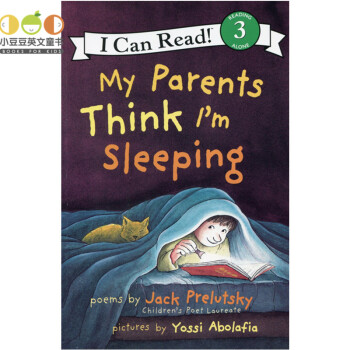

![[现货]霍格伍兹图书馆套装 英文原版 Hogwarts Library 神奇动物在哪里系列 pdf epub mobi 电子书 下载](https://pic.tinynews.org/11944926270/5902fc37Nf8709109.jpg)
